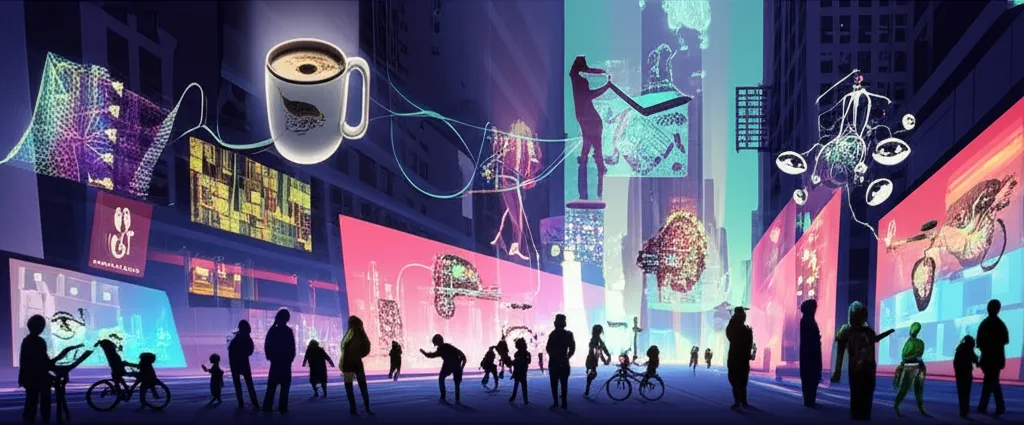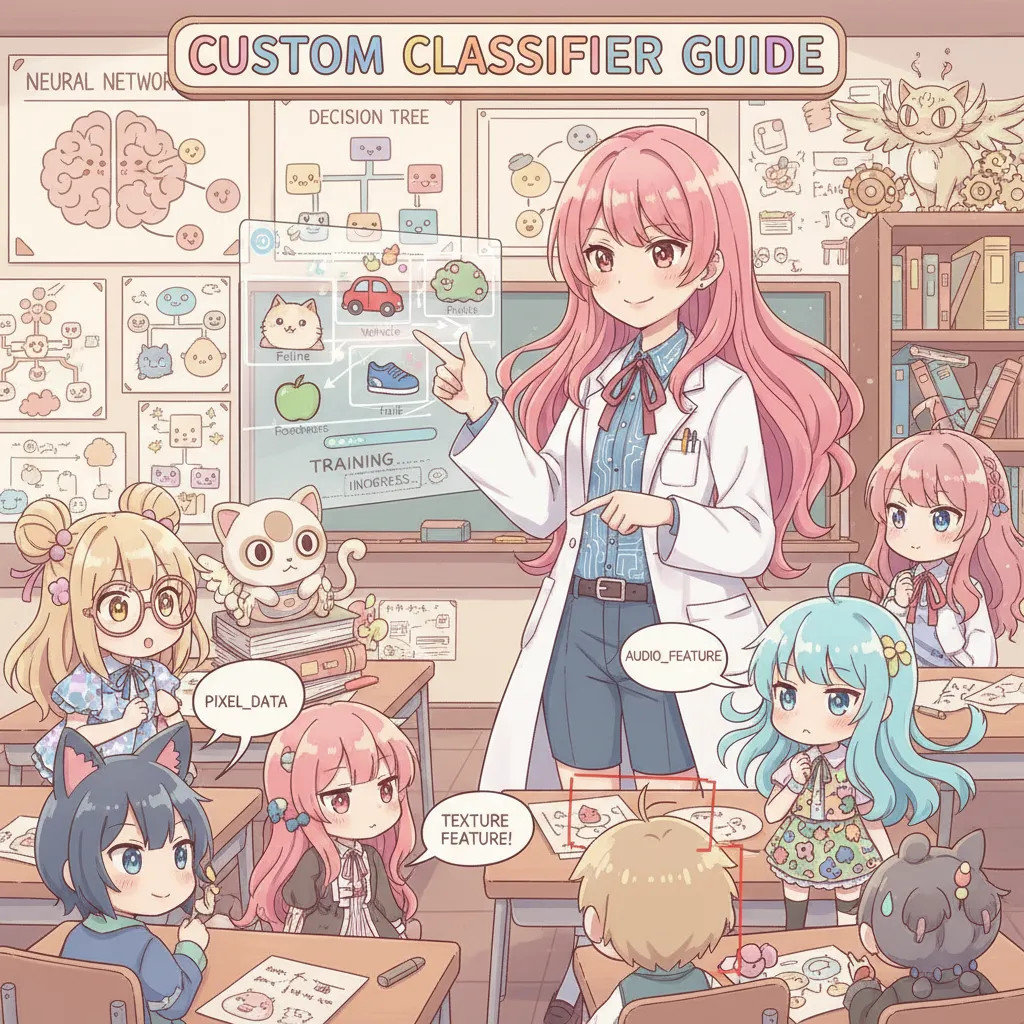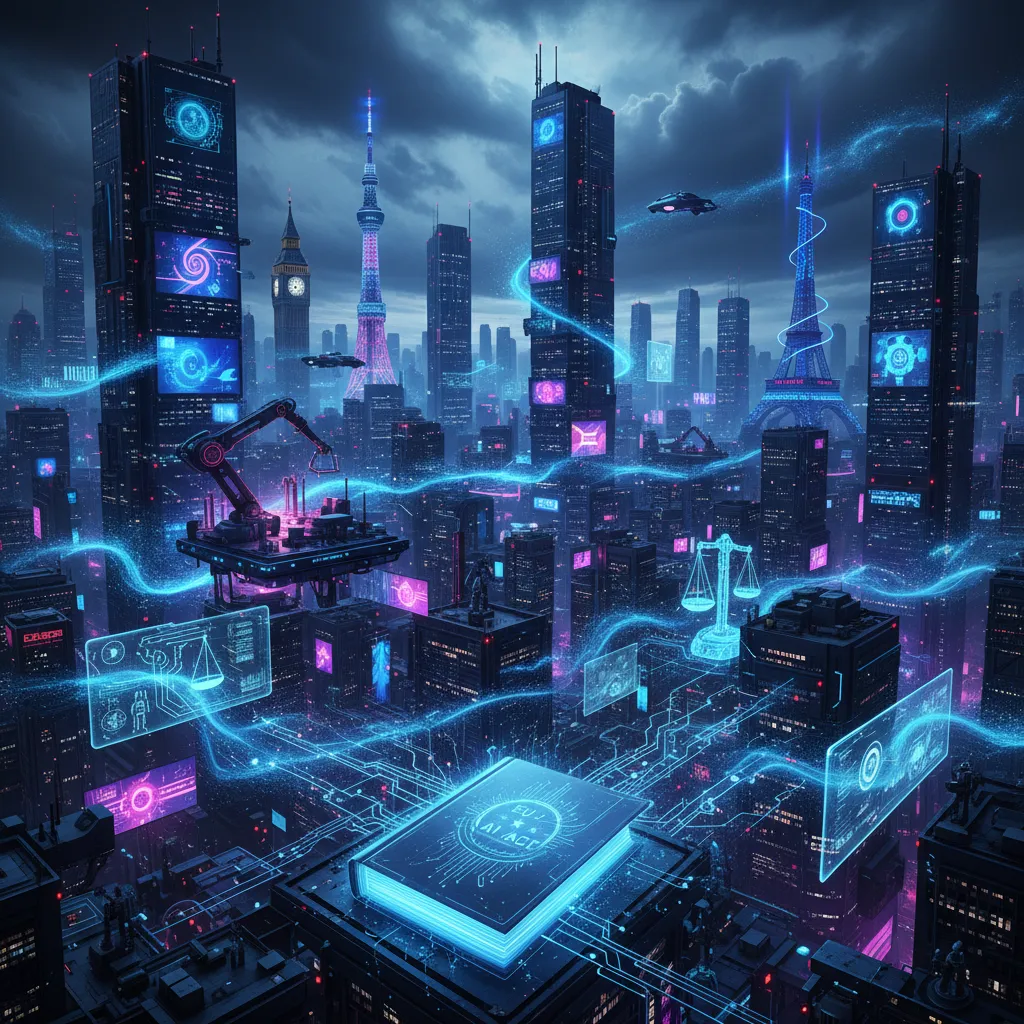I still remember the day my smart fridge rejected expired milk—literally beeped at me and refused to open the door. It's small moments like these that made me realize: computer vision isn't just for researchers or sci-fi fans anymore. By 2025, it’s woven into nearly every aspect of life, sometimes in hilarious ways that no one predicted. So, grab your favorite beverage (hopefully not rejected by your fridge), and let’s take a candid, boots-on-the-ground look at how computer vision is quietly (and loudly) transforming the world around us.
When Computer Vision Hits the Grocery Store: Surprises in Retail Automation
Walking into a grocery store in 2025 feels like stepping into a tech demo. I’m greeted by smart shelves that quietly track every item. These shelves use object detection—a key part of AI-powered tasks—to recognize when stock is running low. More than once, I’ve watched staff get instant alerts on their tablets, rushing over to restock before I even notice anything missing. But the real surprise came when my shopping cart beeped at me. Turns out, I’d accidentally grabbed someone else’s baguette. The cart’s sensors had flagged the mix-up, a reminder that retail automation isn’t just about speed; it’s about accuracy, too.
Retail and e-commerce sectors are leading the way in adopting computer vision technology. Research shows that by 2025, computer vision is everywhere in retail, powering everything from automated sorting to real-time inventory management. These AI-powered tasks are transforming the way stores operate, making processes smoother and more efficient. I’ve seen digital carts and smart shelves working together seamlessly, tracking products and even suggesting alternatives if something’s out of stock. It’s not just about keeping shelves full—it’s about anticipating what customers need before they even ask.
One of the most fascinating changes I’ve noticed is at the checkout. Automated cameras now use advanced object detection to spot price discrepancies and illegal substitutions. If someone tries to swap a pricey steak for a cheaper cut, the system flags it instantly. Shoplifting isn’t impossible, but it’s definitely trickier. I’ve overheard more than one customer grumble as the checkout camera caught a “creative” barcode swap. Still, technology isn’t perfect. Sometimes, the system makes honest mistakes—like flagging a bunch of bananas as a pineapple. It’s a reminder that even the smartest AI can have an off day.
But retail automation isn’t just about efficiency or loss prevention. It’s also about customer satisfaction. Computer vision enables stores to offer personalized deals and targeted suggestions in real time. I’ve had digital displays recommend recipes based on what’s in my cart, or even suggest a new brand of coffee when I lingered too long in the aisle. For someone like me, who’s indecisive about fashion, getting instant, unbiased advice from a robot is surprisingly helpful. It feels like every product can tell its own story, just as Samantha Ruiz, a Retail Innovation Lead, put it:
"Computer vision puts the 'smart' in smart shopping—suddenly, every product can tell its own story."
The impact of these innovations is clear. Studies indicate that computer vision delivers measurable business results, improving operational efficiency and boosting customer satisfaction. Automated sorting, inventory recognition, and real-time suggestions are now standard features in many stores. And while the technology sometimes makes quirky mistakes, it’s hard to deny how much smoother and more engaging the shopping experience has become.
Healthcare in High-Def: Diagnostics That Actually See You
When I think about how far healthcare computer vision has come, I can’t help but remember a recent visit with a friend to her local clinic. She was there for a routine scan—nothing urgent, just a precaution. What struck me most wasn’t the sterile waiting room or the hum of machines, but the speed at which her results arrived. She barely had time to sip her complimentary coffee before her doctor called her back, diagnosis in hand. This isn’t science fiction; it’s the new reality in 2025, powered by computer vision in medical imaging.
Hospitals and clinics now rely on advanced computer vision tools to analyze MRIs, X-rays, and CT scans at what can only be described as superhuman speeds. These systems don’t just process images quickly; they spot subtle patterns and anomalies that might escape even the most experienced radiologist. The result? Faster, more accurate diagnostics, and—perhaps most importantly—peace of mind for patients. Research shows that healthcare organizations leveraging computer vision for diagnostics consistently report improved accuracy and better patient outcomes.
But it’s not just about speed. The real magic lies in the precision. Computer vision models, trained on millions of medical images, can distinguish between benign and malignant growths, flag early signs of disease, and even suggest next steps for treatment. Image classification and pose estimation are at the heart of these breakthroughs, enabling machines to “see” and interpret medical data in ways that were unimaginable just a few years ago.
Beyond diagnostics, patient monitoring has quietly transformed as well. In many hospitals, discreet cameras equipped with computer vision algorithms keep a constant watch over patients. At first, I found this a bit unsettling—after all, who wants to feel like they’re being watched? But as I learned more, I realized how comforting it can be. These systems can detect subtle changes in movement, posture, or facial expression that might indicate pain, distress, or even the early onset of complications. Sometimes, they catch things that even attentive nurses might miss. Early intervention, prompted by these digital eyes, can make all the difference.
Surgical assistance is another frontier. Robots in the operating room now use pose estimation to track the precise location of surgical instruments and the hands of the surgical team. This technology helps reduce risks during complex procedures, ensuring that every movement is monitored and every tool is accounted for. It’s not about replacing the surgeon, but about providing an extra layer of safety and support.
'By 2025, it's not just the doctor looking after you—it's a swarm of watchful algorithms, too.' — Dr. Rena Singh, Medical AI Researcher
The integration of healthcare computer vision into everyday medical practice is more than a technological upgrade—it’s a shift in how we experience care. From rapid diagnostics to vigilant patient monitoring and safer surgeries, the benefits are tangible. Studies indicate that these advancements are not only improving efficiency but also saving lives by catching problems earlier and guiding better decisions.
Logistics: The Invisible Hands Guiding Your Next-Day Delivery
If you’ve ever marveled at how your online order arrives at your doorstep almost before you’ve even closed the browser tab, you’re not alone. I’ve spent the past year peering behind the scenes of logistics efficiency, and what I’ve seen is a world quietly transformed by computer vision. These invisible hands—powered by AI—are now guiding every step of your next-day delivery, from warehouse management to delivery tracking and even fraud detection.
Let’s start with the warehouse. Picture a vast space filled with shelves, boxes, and—these days—robots. Not the clunky, sci-fi kind, but sleek, efficient machines equipped with computer vision. Their “eyes” scan barcodes, recognize inventory, and even spot misplaced items. I once watched a warehouse bot stop everything just to straighten a crooked label. It was oddly endearing, like watching an anxious librarian fuss over a shelf. But this attention to detail is no accident. Research shows that computer vision in warehouse management has dramatically improved inventory accuracy and reduced costly errors.
Automated sorting is another area where computer vision shines. Instead of relying on human workers to manually sort packages, AI-powered systems now identify, categorize, and route items at lightning speed. This not only boosts logistics efficiency but also helps companies cut costs and reduce human error. According to industry studies, warehouse management in 2025 relies heavily on these advanced computer vision systems, making the entire process smoother and more reliable.
Now, let’s hit the road. Fleet optimization is a game-changer, and it’s all thanks to real-time video data. Trucks and delivery vans are now fitted with cameras that feed information back to central hubs. These systems analyze traffic patterns, weather conditions, and even road hazards. The result? Delivery routes are adjusted on the fly, helping drivers avoid delays—something I’m always grateful for when I’m waiting on a birthday gift. This real-time routing is a perfect example of how logistics efficiency is no longer just a buzzword, but a daily reality.
Delivery tracking has also become far more sophisticated. Cameras mounted on delivery vehicles monitor every package, ensuring that items are handled properly and delivered to the right address. If a package is damaged or goes missing, computer vision systems can quickly pinpoint where things went wrong. And when it comes to fraud detection, the technology is getting so sharp that even the most determined porch pirates might start thinking twice. With AI analyzing every delivery, suspicious activities are flagged instantly—sometimes before the driver even leaves the block.
‘When deliveries arrive on time, thank a machine with eyes sharper than yours.’ — Alex Tan, Logistics Operations Manager
In 2025, logistics companies are leveraging computer vision not just to keep up with demand, but to set new standards in warehouse management, delivery tracking, and fraud detection. The impact is clear: faster deliveries, fewer mistakes, and a level of reliability that would have seemed impossible just a few years ago. And while the technology may be invisible to most, its influence is felt every time a package lands safely on your doorstep.
A Tangent Down the Farm Lane: Sustainable Agriculture Gets Eyes Too
When I think about computer vision, my mind usually jumps to self-driving cars or maybe security cameras in busy city centers. But in 2025, one of the most surprising places I’ve seen this technology take root is out in the countryside—right in the heart of sustainable agriculture. It’s not just about robots and gadgets anymore; it’s about real fields, real crops, and the very real challenges farmers face every season.
On my last visit to a local farm, I watched as drones equipped with computer vision soared above the fields. Their mission? To spot sick crops and early signs of pest infestations. It’s almost like having a countryside superhero with superhuman eyesight, scanning for trouble before it spreads. These drones don’t just fly for show—they’re part of a new wave of precision monitoring that’s changing how farmers manage crop health and sustainability.
Research shows that computer vision is now central to precision monitoring in agriculture. These systems analyze images from drones and land-based cameras, quickly flagging areas where crops are under stress or pests are moving in. The result? Farmers can react faster, targeting irrigation and pest control only where it’s needed. That means less water wasted and fewer chemicals sprayed—both big wins for sustainable agriculture. I remember chatting with a farmer who joked that while the crops seemed to love the attention, the cows remained unimpressed by the whole tech parade.
But it’s not just about catching pests or saving water. The data collected by these computer vision systems goes further, streamlining crop health assessment and even helping with livestock management. I heard a story from a neighboring farm that used to lose acres of soybeans every year to threats they could barely see coming. This year, thanks to a tractor fitted with smart cameras, they caught the problem early and saved the entire crop. Stories like this are becoming more common, and they’re not just anecdotes—they’re proof that sustainable farming is gaining ground, quite literally, with the help of technology.
It’s easy to get caught up in the numbers and the science, but sometimes the most powerful moments come from the people living these changes. I’ll never forget the words of Mary O’Hara, a fourth-generation farmer, who told me,
"In 2025, technology gives my fields a better checkup than my local clinic ever did."
That sentiment sums up the shift I’m seeing: computer vision isn’t just a buzzword; it’s a practical tool that’s helping farmers work smarter, not harder. As sustainable agriculture continues to evolve, precision monitoring, crop health assessment, and pest detection are no longer futuristic ideas—they’re everyday realities. And while the cows might not care, the fields—and the farmers—are thriving.
Looking ahead, it’s clear that computer vision will keep shaping the future of farming. With every drone flight and every camera scan, we’re not just growing better crops—we’re cultivating a more sustainable world, one field at a time.



